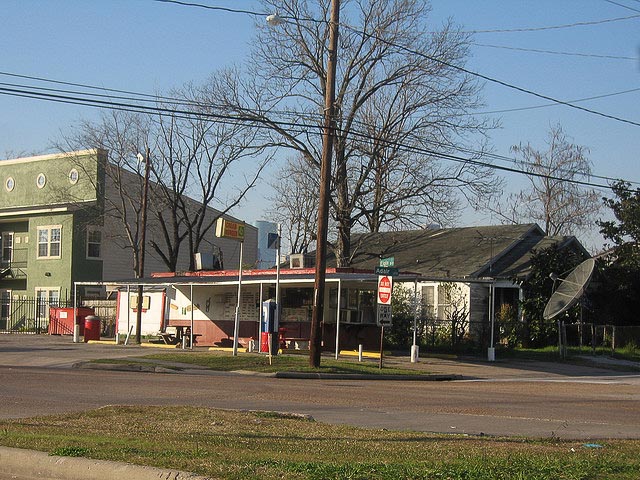Not exactly, says Lester King, a researcher at Rice University’s Shell Center for Sustainability.
King, an urban planner with a background in sustainable development, focuses on tracking various indicators about Houston, its neighborhoods and their growth. In his latest report, issued earlier this fall, he calls attention to many of the misconceptions surrounding the country’s’ fourth-largest city.
Myth 1: All real estate within the Inner Loop is booming
Houstonians often talk about how real estate prices and development are surging anywhere within Houston’s Inner Loop, the core of the city within the confines of Loop 610, pictured below.
But more accurately, it’s west side of the Inner Loop that’s booming. Places like the Fifth Ward and the Third Ward… not so much.
King says it’s important not to assume that all of the communities in the city’s core are benefiting from the surge of activity that’s largely confined to Houston’s west side. U.S. 288 forms a physical a mental barrier between the west and east sides of the city, King says. “We have to struggle to think about the other side, like if we can’t see it, it’s not there,” King says. “It’s another reason the Third Ward won’t be gentrified any time soon. It’s not like there’s police stopping people from crossing it. But things like that create real separations and distinctions between people.”
King says he believes it’s the public’s responsibility to somehow step in and foster expanded opportunities in communities like those where a clear market hasn’t been established. But for now, he writes in his report, “The ‘Inside the Loop’ rhetoric should perhaps be changed to ‘the West Inner Loop.’”
Myth 2: All of Houston is gentrifying quickly
In his report, King uses a slightly different definition to describe gentrification – one that specifically focuses on race and is intended to highlight when a racial group gets displaced from a community. King says “gentrification” occurs when, at one point, 75 percent of an area’s residents were from one race or ethnicity, and today, at least half its population belongs to another race or ethnicity.
He uses that definition, in part, because Houston is a minority-majority city, so old ideas about race and who is considered a “minority” don’t necessarily apply. By his definition, gentrification isn’t widespread in Houston. “The data shows the Third Ward is still pretty much a black neighborhood,” King says. “The Fifth Ward is still a black area.”
His study found that from 1990 to 2013, very few areas in Houston became gentrified. Just five communities switched race, and only one of them – the Washington Avenue area – fit the classic definition of gentrification, moving to a white majority. Interestingly, the concentration of development on the west side of Houston – which contains relatively few racial minorities – may contribute to the lack of gentrification in other areas, King says.
Myth 3: Houston’s population is poised to boom.
When people talk about Houston’s rapid growth, it’s really the eight-county greater Houston area they’re talking about, King says. The Houston-Galveston Area Council, for example, projects the region’s population to grow by 3.5 million by 2035. But King says only about 1 million of that growth will be within the Houston city limits.
Indeed, while both the city of Houston and the region are growing, it’s the latter that’s enjoying faster growth.
He believes people have confounded the two figures, possibly for marketing purposes. “We’re probably overvaluing and overspeculating on our land values,” King says.
“While it may seem strategically attractive to market the city as a major growth hub expecting 3.5 million people, the city may be indirectly eroding its affordability and middle class wealth base, since land values are increasing to meet the needs of 3.5 million people, who are in fact not moving here at all,” King writes in his report.
Myth 4: Houston is incredibly affordable
Houston housing is relatively inexpensive compared to other big cities. But residents earn less money than people who live elsewhere, and transportation costs are high. “When transportation costs are added to housing costs as a percentage of income, many areas along the periphery of the city also become less affordable,” King writes. That means housing is cheaper in Houston, but not necessarily more affordable.
“The median housing price is $123,000 in the city limits,” King continued. “You could argue a person working at a restaurant can afford a home in the city limits – so they can get a home in the Third or Fifth Ward, where they’re not lots of development, and they’d have to figure out how to get to work because jobs aren’t there.
Houston ranks 26th for affordability, according to data King cites from the Center for Neighborhood Technology. The average Houstonian spends 46 percent of his income on housing and transportation costs. “This conflicts with Houston’s marketability as the affordable capital of the country,” King writes in his report.
He goes on to say that in 2013, about 35 percent of households spent more than 30 percent of their income on housing costs, and that number is increasing.

